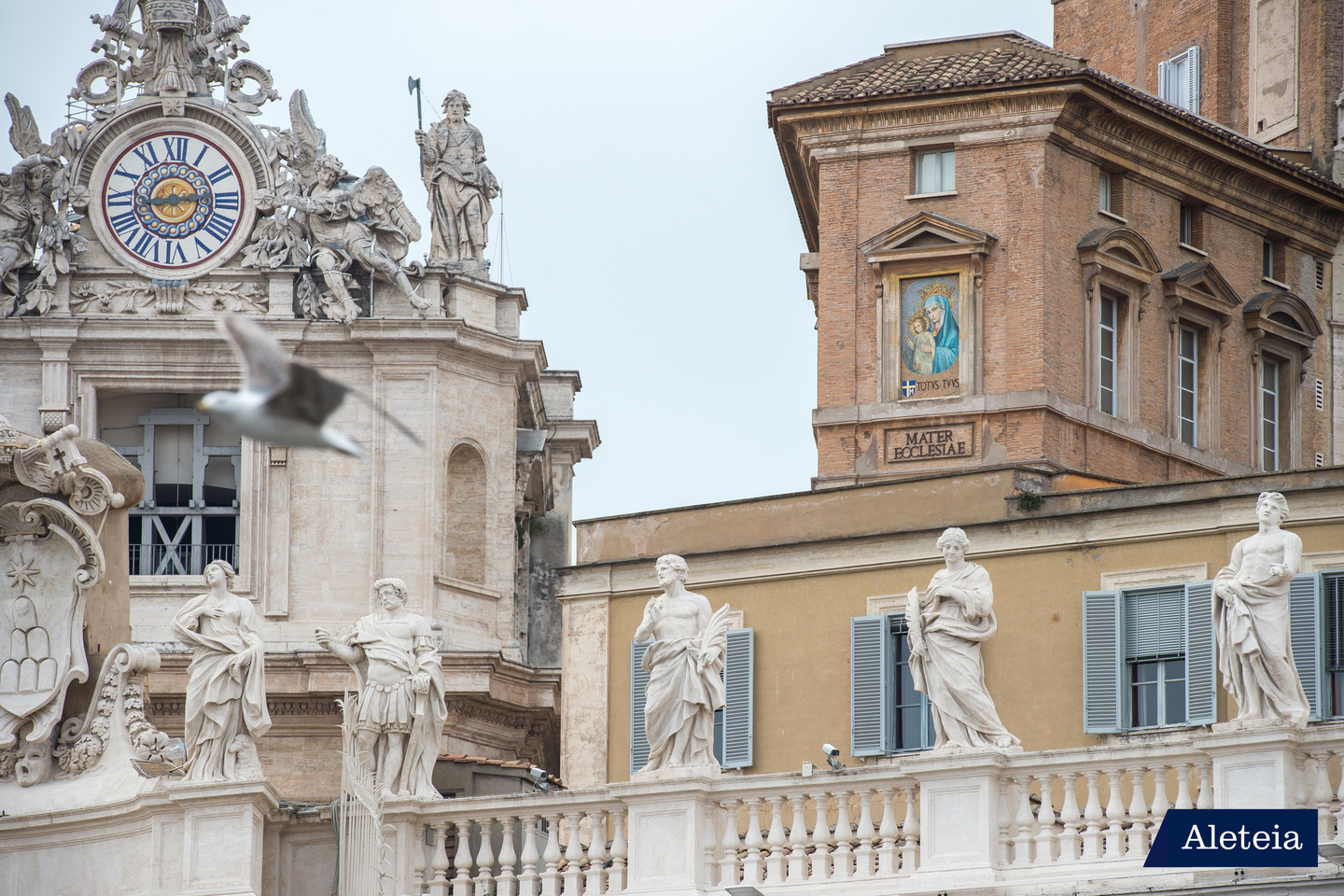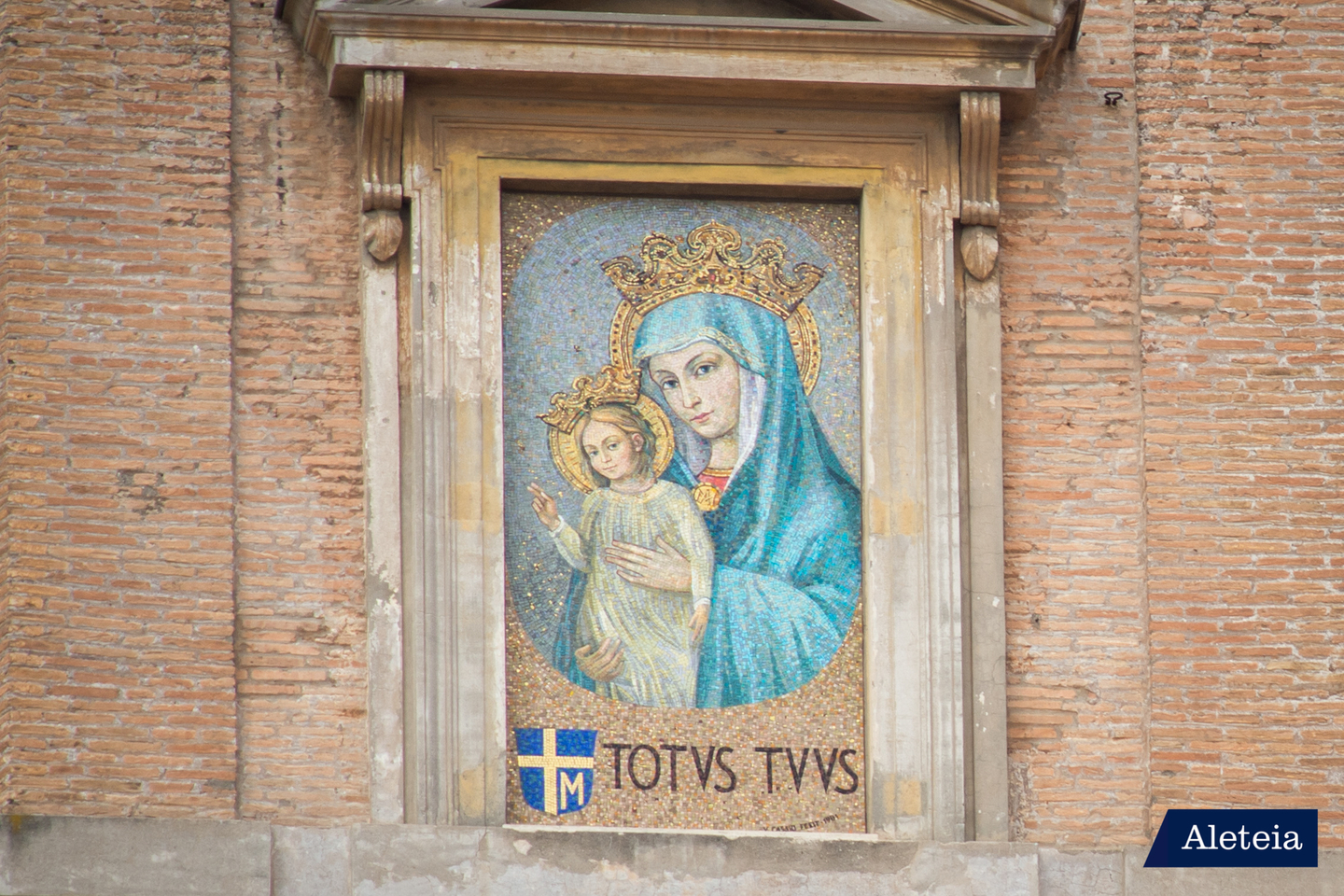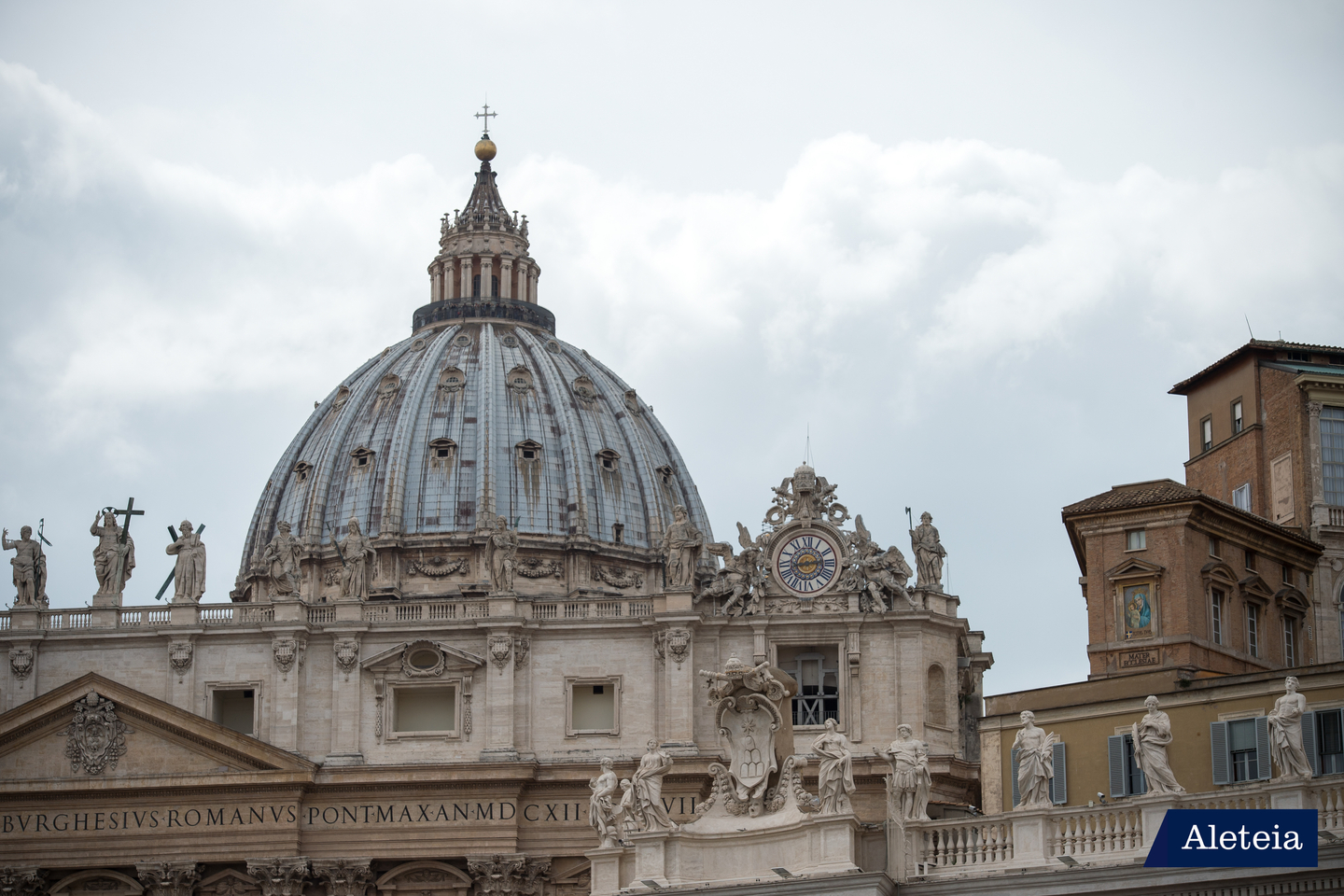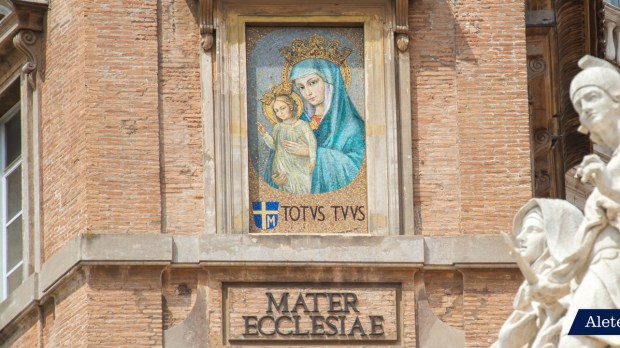Lenten Campaign 2025
This content is free of charge, as are all our articles.
Support us with a donation that is tax-deductible and enable us to continue to reach millions of readers.
On Day 2 of our tour of Rome’s Madonnelle (“little Madonnas”), we pause before Maria Mater Ecclesiae in St. Peter’s Square.
The image of Mary Mater Ecclesiae (“Mother of the Church”) overlooks St. Peter’s Square from the facade of the Apostolic Palace. She has kept vigil over the square since December 7, 1981, at the will of John Paul II, whose coat of arms, and motto “Totus tuus” (“All yours,” from a prayer to Mary), are carved at the base of the mosaic.

The story of this image is tied to John Paul II, who immediately attributed his survival of the assassination attempt of May 13, 1981, to Mary’s protection. Also, because of this, he took up an idea that a student had presented to him one year earlier, and he expressed the desire that an image of the Madonna—which, strangely, was absent—be placed in a very visible location in the Square.
For the subject of the image, John Paul II requested a representation of the Madonna as “Mother of the Church,” because—he said—”The Mother of God has always been united to the Church, and has always been felt as being particularly close during the most difficult moments of history.”

The image is a copy of a time-honored fresco, a Madonna and Child known as the “Madonna of the Column” because the original was painted on a column of the ancient Constantinian basilica.
In 1964, Pope Paul VI solemnly proclaimed Mary the “Mother of the Church,” and in 1970 the inscription “Mater Ecclesiae” was inserted into the ancient fresco.

The mosaic, inspired by the ancient fresco, is the handiwork of the mosaicists of the Vatican Mosaic Studio, and was installed on December 7, 1981. The next day, the Feast of the Immaculate Conception, John Paul II blessed it, expressing the desire “that all who come to St. Peter’s Square may raise their eyes to her, to offer her, with a feeling of filial confidence, their own greeting and prayer.”
—
Follow the series here: Little Madonnas of Rome
See more articles like this at Aleteia’s Art & Travel section.

